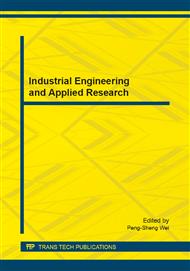p.3
p.7
p.14
p.18
p.24
p.28
p.33
p.39
A New Redundant-DOF Wearable Master Device with Force Feedback
Abstract:
In this paper, a new redundant degree-of-freedom wearable haptic device is developed and presented, which combines the advantages of the arm exoskeleton and the desktop haptic device. The haptic device has capabilities of large working space and high stiffness, the design of the wearable can reduce operators’ fatigue and increase the comfort of the operation. This paper also includes the analysis of workspace based on the kinematic analysis. Dynamics model of the haptic device has been established to get the torques of the driven motors of every joint. Lately, the virtual prototype model was established in ADAMS to get the simulations results, which lays the foundation for further force-feedback experiments.
Info:
Periodical:
Pages:
18-23
Citation:
Online since:
August 2014
Authors:
Keywords:
Price:
Сopyright:
© 2014 Trans Tech Publications Ltd. All Rights Reserved
Share:
Citation:


